|
Home
Projects
Publications
Resources
Contact |
|
Research Areas
Computer Vision, Graphics, Medical Image Analysis, Biometrics, Image Processing, Computer Animation and Visualization.
Research Projects
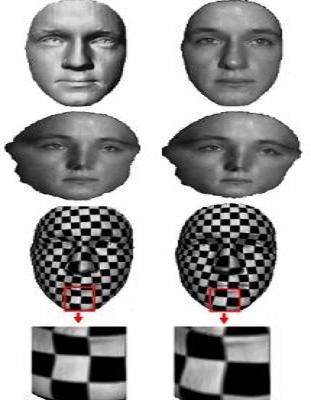 |
3D Surface Matching and Recognition Using Conformal Geometry
3D surface matching is a fundamental issue in computer vision
with many applications such as shape registration, 3D object recognition and classification.
However, surface matching with noise, occlusion and clutter is a challenging problem.
In this paper, we analyze a family of conformal geometric maps including harmonic maps,
conformal maps and least squares conformal maps with regards to 3D surface matching.
As a result, we propose a novel and computationally efficient surface matching framework by using least squares conformal maps...
[demo:avi], [paper:pdf, acknowledgement] |
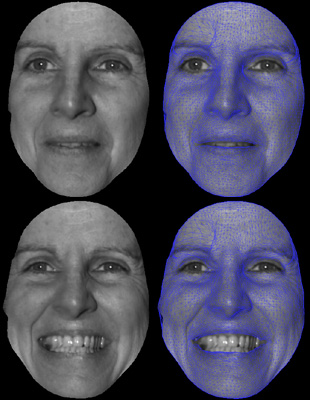
|
High Resolution Tracking of Non-Rigid 3D Motion of Densely Sampled Data Using Harmonic Maps
We present a novel fully automatic method for high resolution,
non-rigid dense 3D point tracking. The novelty of this paper is the development of an algorithmic framework
for 3D tracking that unifies tracking of intensity and geometric
features, using harmonic maps with added feature correspondence
constraints. While the previous uses of harmonic maps provided only
global alignment, the proposed introduction of interior feature
constraints guarantees that non-rigid deformations will be
accurately tracked as well. The harmonic map between two topological
disks is a diffeomorphism with minimal stretching energy and bounded
angle distortion. The map is stable, insensitive to resolution
changes and is robust to noise. Due to the strong implicit and
explicit smoothness constraints imposed by the algorithm and the
high-resolution data, the resulting registration/deformation field
is smooth, continuous and gives dense one-to-one inter-frame
correspondences. Our method is validated through a series of
experiments demonstrating its accuracy and efficiency...
[demo:avi], [paper:pdf]
|
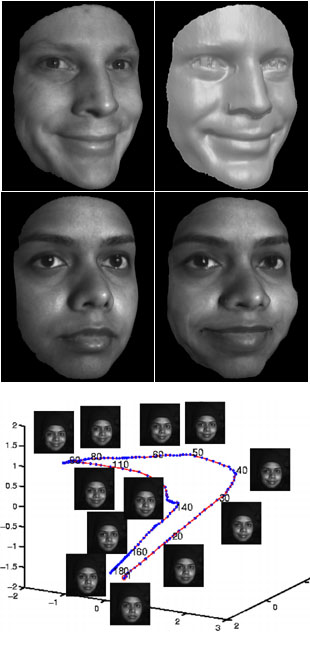 |
High Resolution Acquisition, Learning and Transfer of Dynamic 3-D Facial Expressions
Synthesis and re-targeting of facial expressions is central to facial animation and often involves significant manual work in order to achieve realistic expressions, due to the difficulty of capturing high quality dynamic expression data. We address fundamental issues regarding the use of high quality dense 3-D data samples undergoing motions at video speeds, e.g. human facial expressions. In order to utilize such data for motion analysis and re-targeting, correspondences must be established between data in different frames of the same faces as well as between different faces.
We present a data driven approach that consists of four parts: 1) High speed, high accuracy capture of moving faces without the use of markers, 2) Very precise tracking of facial motion using a multi-resolution deformable mesh, 3) A unified low dimensional mapping of dynamic facial motion that can separate expression style, and 4) Synthesis of novel expressions as a combination of expression styles.
The accuracy and resolution of our method allows us to capture and track subtle expression details. The low dimensional representation of motion data in a unified embedding for all the subjects in the database allows for learning the most discriminating characteristics of each individual’s expressions as that person’s “expression style”. Thus new expressions can be synthesized, either as dynamic morphing between individuals, or as expression transfer from a source face to a target face, as demonstrated in a series of experiments...
[demo:avi1, avi2], [paper:pdf]
|
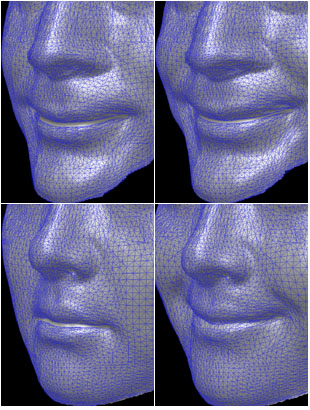 |
A Hierarchical Framework For High Resolution Facial Expression Tracking
We present a novel hierarchical framework for high resolution, nonrigid facial expression tracking. The high quality dense point clouds of facial geometry moving at video speeds are acquired using a phase-shifting based structured light ranging technique. To use such data for temporal study of the subtle dynamics in expressions and for face recognition, an efficient nonrigid facial tracking algorithm is needed to establish intra-frame correspondences. We propose such an algorithmic framework that uses a multi-resolution 3D deformable face model, and a hierarchical tracking scheme...
[paper:pdf]
|
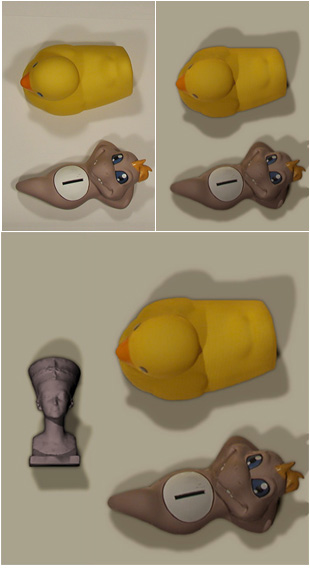
|
Estimation of Multiple Directional Light Sources for Synthesis of Augmented Reality Images
We present a new method for the detection and estimation of multiple directional illuminants, using a single image of any object with known geometry and Lambertian reflectance. We use the resulting highly accurate estimates to modify virtually the illumination and geometry of a real scene and produce correctly illuminated Augmented Reality images. Our method obviates the need to modify the imaged scene by inserting calibration objects of any particular geometry, relying instead on partial knowledge of the geometry of the scene. Thus, the recovered multiple illuminants can be used both for image-based rendering and for shape reconstruction. Our method combines information both from the shading of the object and from shadows cast on the scene by the object...
[paper:pdf]
|
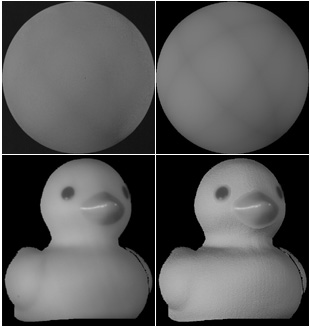
|
Estimation of Multiple Illuminants from a Single Image of Arbitrary Known Geometry
We present a method for the detection and estimation of multiple illuminants, using one image of any object with known geometry and Lambertian reflectance. Our method obviates the need to modify the imaged scene by inserting calibration objects of any particular geometry, relying instead on partial knowledge of the geometry of the scene...
[paper:pdf]
|
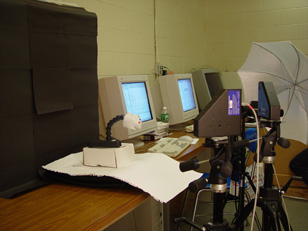
|
Brookhaven National Laboratory (BNL) BME Project
Developing an integrated CCD-based image capture
and motion tracking system, a core research of novel technologies
for Positron Emission Temography (PET) and functional Magnetic
Resonance Imaging (MRI) that will allow imaging of the awake animal
brain in real-time and in natural physiological conditions. Knowing
the brain’s position at any point in time will make is possible to
compensate for its motion, either during the data acquisition or
reconstruction phase of MRI and MicroPET scans.
|

|
Single View Metrology Project
In the light of the algorithm described in "Single View Metrology" by Criminisi, Reid, and Zisserman, ICCV 1999, we developed a system that can reconstruct 3D texture-mapped models from a single image and user interactions...
more
|
|
